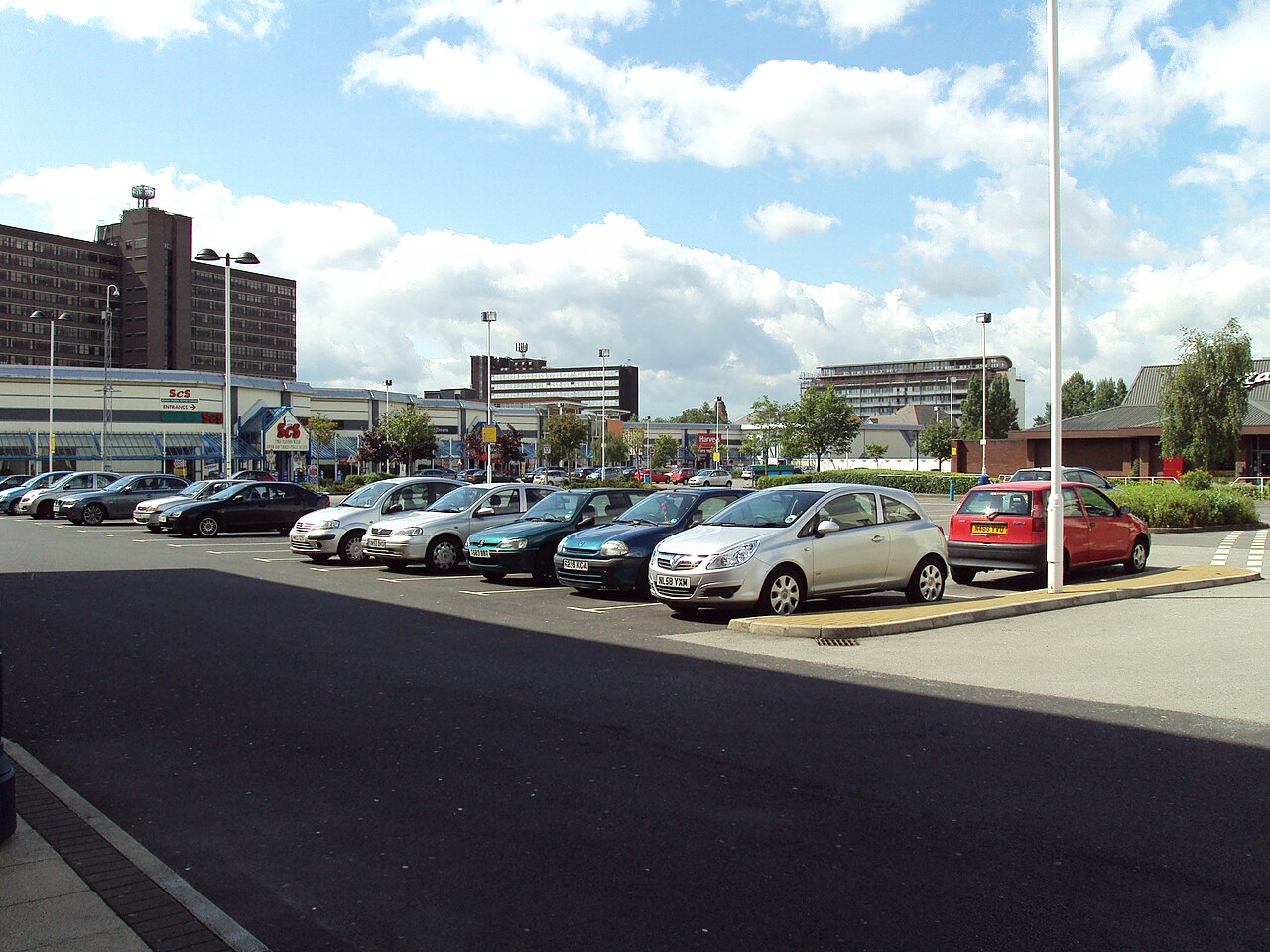White City is a retail park on Chester Road in Stretford, Greater Manchester, England. At the southeast corner of the docks area and southeast of Manchester United’s Old Trafford ground, it occupies the site of the former Manchester Botanical Gardens, operated by the Manchester Botanical and Horticultural Society, founded in 1827 and renamed the Lancashire Royal Manchester Botanical and Horticultural Society in 1876. As a consequence of the society’s increasing financial problems the gardens were sold, becoming an amusement park and sports stadium. Following their closure, in 1981 the site was redeveloped to become the retail park it is today.
The original gateway to the Botanical Gardens still stands at the edge of the present-day retail park.
History
The Botanical and Horticultural Society was founded in Manchester in 1827 to encourage the study of botany and horticulture.[1] The society built a botanical garden occupying 16 acres (6 ha) on a site chosen by the scientist John Dalton, down-wind of pollution from the city.[a]The prevailing wind carried the city’s airborne pollution to the east.[2] The land, which was owned by Thomas de Trafford, was conveyed to John Holt Stanway, who leased it to the society for 2000 years.[2]
The gardens were well established by 1839, featuring a complex of plant houses and conservatories 321 feet (98 m) in length; the central conservatory had a 40-foot (12 m) high dome.[2] In 1857 the gardens hosted the Art Treasures ExhibitionExhibition of fine art art held in Manchester in 1857, the largest art exhibition ever in the UK., which remains the largest art exhibition ever held in the United Kingdom. Comprising 16,000 exhibits,[3] it received more than 1.3 million visitors in 142 days. Another exhibition was held in the gardens in 1887 to celebrate Queen Victoria’s Golden Jubilee, attracting 4.75 million visitors over 192 days.[2]
But paradoxically the fortunes of the Botanical Gardens declined despite the success of these exhibitions, as wealthy Mancunians moved out of the city to the suburbs and outlying villages such as Didsbury, Bowden and Alderley Edge, where they had the opportunity to indulge their horticultural interests in their own extensive gardens. Unsuccessful attempts were made to persuade Stretford Urban District CouncilCreated in 1894 and granted a charter of incorporation in 1933, becoming a municipal borough. Abolished in 1974, the area it controlled is now part of the Metropolitan Borough of Trafford in Greater Manchester. and Manchester City Council to purchase the gardens, and so in 1907 the site was leased to White City Limited, who converted part for use as an amusement park. In 1927 the remaining 11 acres (4 ha) were sold to Canine Sports Ltd, to be used as a greyhound stadium.[2] The stadium was also used for speedway racing from 1928 until 1930, and occasionally thereafter until 1958.[4] Following its closure in 1981, the stadium site was redeveloped into the retail park it is today.[5]


